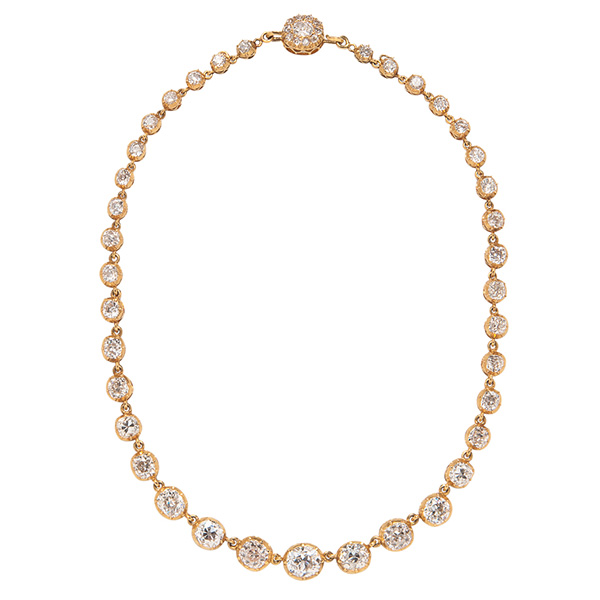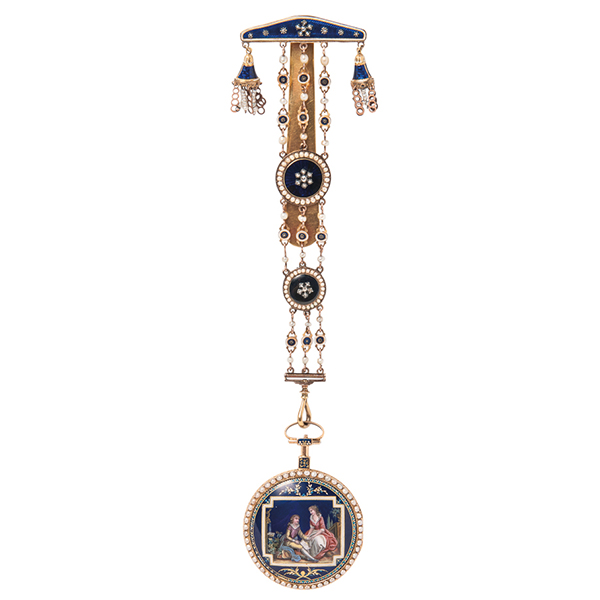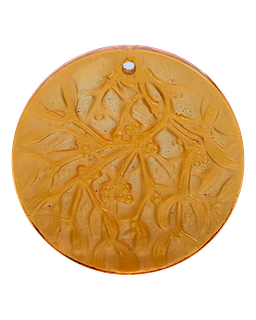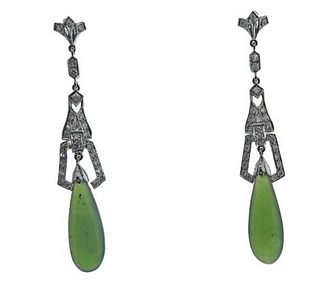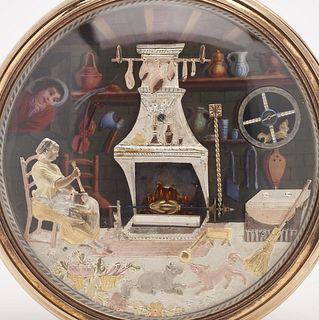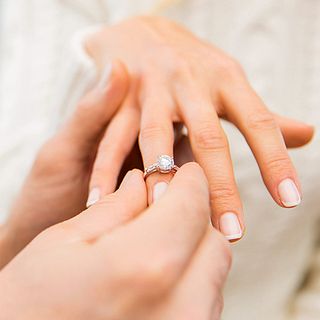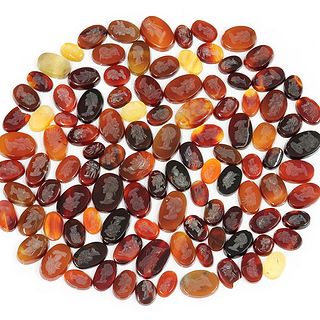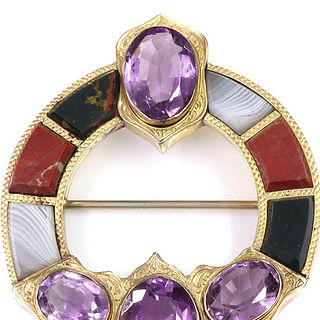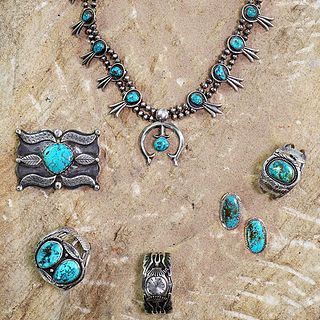A Beginners Guide: Styles of Jewelry with John Colasacco
There is a certain level of satisfaction that comes with wearing vintage and antique jewelry that just cannot be contested with present-day makes. For instance, clasping a Cartier bracelet around ones wrist that was forged for the likes of Hollywood stars such as Sofia Loren, Elizabeth Taylor and Audrey Hepburn conveys an air of tribute and elegance that demands prestige. Vintage and antique jewelry contains the histories and creative eyes of the times it was defining - adding a special dash of interest that just isn’t inherent in contemporary styles (yet).
Familiarizing oneself on how to tell styles like Art Deco, Edwardian and Art Moderne apart, not only makes for a clever conversation starter, but it makes browsing through auction catalogs much more exciting.
To get you started on the basics, we called upon John Colasacco, a specialist in the Fine Jewelry Department at Skinner to help define and designate many of the styles that can be found in Skinner's upcoming, Important Jewelry sale on September 25th:
Lot 66, Cartier, Art Deco Platinum and Diamond Bracelet; Estimate $100,000 - $150,000
1. Art Deco
One of the key elements of Art Deco (1920s - 1930s) jewelry is the use of geometric patterns and linear design. When trying to identify the style, I like to ask “does this remind me of the Chrysler building?” You’ll see various stylized motifs, as jewelry designers from this period transformed naturalistic forms into circles, ovals, rectangles, and squares. This Cartier bracelet is a quintessential example of an Art Deco strap bracelet, composed of geometric panels showing stylized lotus motifs and finely pierced platinum work, and completed by a buckle and clasp motif with pave-set diamonds.
Lot 17, Antique Diamond Riviere; Estimate $40,000 - $60,000
2. Antique
What I love about antique (100+ years) jewelry is the old cut diamonds. The cut of a diamond or gemstone can help you determine its age. Older cuts tend to be more “lumpy” and cushiony, with smaller tables and steeper crown angles. While the majority favors the modern round brilliant-cut, I love the way old mine-cut diamonds sparkle! This diamond riviere, a necklace of graduated gemstones, and likely dates to the mid-19th century, is set with approximately 32.00 cts. of old mine-cut diamonds. You also need to look at the way the stones are set- these diamonds are in crimped bezels rather than open prongs. The simplicity and elegance makes this a fantastic piece of antique diamond jewelry.
Lot 106, Cartier, Art Moderne Platinum, Ruby, and Diamond Bracelet; Estimate $30,000 - $50,000
3. Art Moderne
I look at Art Moderne (1930s) jewelry as not quite Art Deco, and not quite Retro. Retro jewlery is often big, bold yellow gold. Art Moderne is hugely influenced by the Machine Age, and you can immediately see the difference between the Art Deco Cartier bracelet discussed above and this one here. Art Moderne jewelry and style look at machine parts, and the platinum tubogas, or, gaspipe chain is in stark contrast with the geometric Art Deco plaque links. I also love the sleek design of the central element with invisibly-set rubies.
Lot 50, Edwardian Platinum and Diamond Pendant; Estimate $8,000 - $12,000
4. Edwardian
Edwardian (1901-1915) jewelry is where you really start to see jewelry in platinum. While platinum had been used prior, the invention of a new torch in the late 19th century allowed the material to be worked with less difficulty and the garland style really evolved. Edwardian jewelry typically consists of garland motifs and finely pierced lacework. It is elegant and delicate, and this pendant has delicate scrolling foliate motifs typical of this period.
Lot 23, Georgian Enamel Watch Chatelaine, c. 1798; Estimate $8,000 - $10,000
5. Georgian
Georgian (1714-1830) jewelry has been quite popular in recent years. You typically expect to see silver-topped gold, and gemstones backed by colored foil to enhance the color due to the nature of cutting techniques. One element of 18th century fashion that I love is the waist-hung watch or etui. This chatelaine watch is lovely, and is of the typical form with a central watch, and would have had shorter side chains for a key, seal fob, or other trinkets. They were often elaborate and highly decorated, and would have adorned the most fashionable of Georgian ladies.
Click here to view Skinner's upcoming Important Jewelry sale on September 25th.
Click here to view all upcoming Fine Jewelry on Bidsquare.
_________________________________
About John Colasacco:

John has maintained a lifelong interest in fine jewelry with a particular expertise in antique and period pieces. His love of antiques began in the flea markets, tag sales, and antiques shops of his native Westchester County, New York, appreciating the beauty and simplicity of 18th century English silver. While studying at Boston University, John explored his interest in the auction world by joining Skinner’s Boston gallery team part time in 2002. In 2005, John became a specialist in the Fine Jewelry Department under the close tutelage of Gloria Lieberman.
Currently, John appraises and catalogs much of the jewelry that comes into the gallery. In 2010, John joined the ranks of Skinner’s auctioneers and can be seen regularly on the auction podium, and in 2013, John became an appraiser on the PBS series Antiques Roadshow.
John holds a bachelor of fine arts degree in art history from Boston University and is also a Graduate Gemologist, having received his training from the Gemological Institute of America in New York.
Watch John Colasacco appraise an antique Tiffany & Co. ring on Antiques Roadshow PBS!
- Rafael Osona Auctions' Modern & 19th Century Design From Nantucket Estates
- Bidsquare Appoints Traci Lombardo as CEO, Reinforcing Founding Commitment to Auctioneers
- Quilts as a 2025 Design Trend: A Celebration of American Heritage and Craftsmanship
- A Celebration of Sports History and Collectibles
- The Thrill of Sports Memorabilia Auctions: A Collector’s Paradise
- Demystifying Coin Condition: A Guide to the Sheldon Grading Scale
- Snoopy & Friends: A “Peanuts” Auction at Revere
- Colorful Chinese Monochromes at Millea Bros
- 12 Holiday Gifts for the “Impossible to Buy For” on Bidsquare
- Alluring Art Objects and Accessories from the Estate of Chara Schreyer



 EUR
EUR CAD
CAD AUD
AUD GBP
GBP MXN
MXN HKD
HKD CNY
CNY MYR
MYR SEK
SEK SGD
SGD CHF
CHF THB
THB
